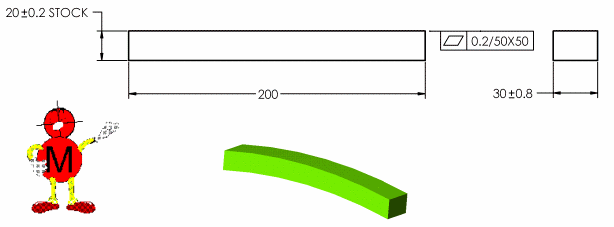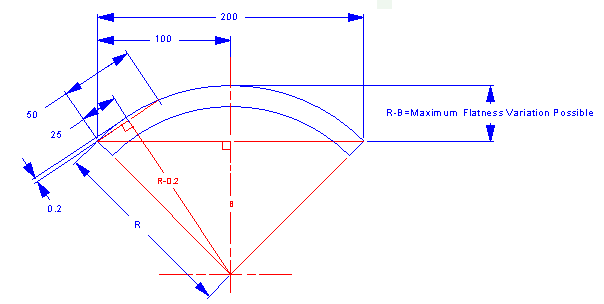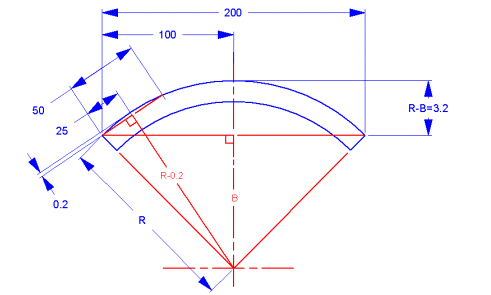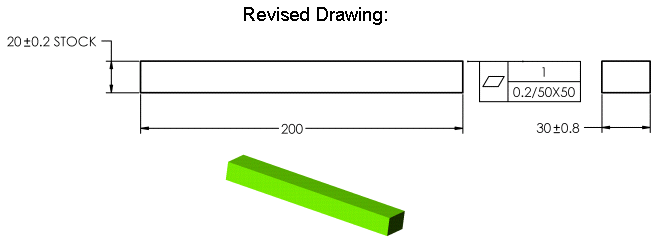| When
Using "Unit Basis", Include an Overall Limit!
Flatness and straightness on a unit
basis are good controls to use when you don't want an abrupt
change in a surface. If you don't limit the overall variation,
however, a larger than expected out of flatness or
straightness may result. For the part shown below, flatness on
a unit basis of 0.2/50mm has been specified. Since the overall
part is 200mm long, what is the maximum flatness there could
be over the entire length of the part?
|

|
|

|
|
The maximum
radius of curvature allowed by the flatness of 0.2/50
is:
R2 = 252 + (R - 0.2)2
R2 = 625 + R2 - 0.4R
+ 0.04
0.4R = 625.04
R = 1562.6 |
|

|
|
Solving the
other triangle for B:
1562.62 - 1002 = B2
B =
1559.4
Therefore the maximum out of flatness could
be:
R - B = 3.2 |
| To avoid this
it is usually best to include an overall flatness
control when applying flatness or straightness on a unit
basis. |
|

| |